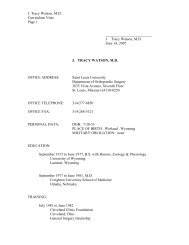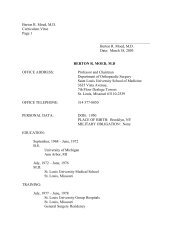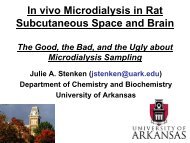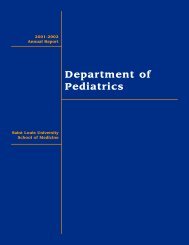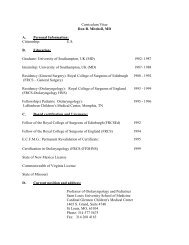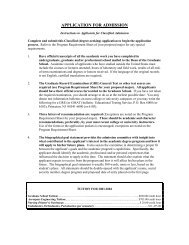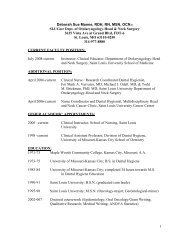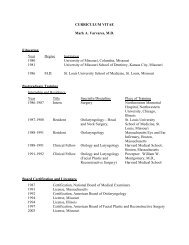Living Image 3.1
Living Image 3.1
Living Image 3.1
You also want an ePaper? Increase the reach of your titles
YUMPU automatically turns print PDFs into web optimized ePapers that Google loves.
E. Luminescent Background Sources & Corrections<br />
204<br />
the read bias image is stored with the image data rather than the usual background<br />
information.<br />
If the amount of dark charge associated with an image is negligible, read bias subtraction<br />
is an adequate substitute for dark charge background subtraction. Dark charge increases<br />
with exposure time and is more significant at higher levels of binning. A good rule of<br />
thumb is that dark charge is negligible if:<br />
τ B2 < 1000<br />
where τ is the exposure time (seconds) and B is the binning factor.<br />
Under these conditions, dark charge contributes less than 0.1 counts/pixel and may be<br />
ignored.<br />
Dark Charge Dark charge refers to all types of electronic background, including dark current and read<br />
bias. Dark charge is a function of the exposure time, binning level, and camera<br />
temperature. A dark charge measurement should be taken within 48 hours of image<br />
acquisition and the system should remain stable between dark charge measurement and<br />
image acquisition. If the power to the system or camera controller (a component of some<br />
IVIS Systems) has been cycled or if the camera temperature has changed, a new dark<br />
charge measurement should be taken.<br />
E.2 Background Light On the Sample<br />
The dark charge is measured with the camera shutter closed and is usually performed<br />
automatically overnight by the <strong>Living</strong> <strong>Image</strong> ® software. The software acquires a series of<br />
zero-time exposures to determine the bias offset and read noise, followed by three dark<br />
exposures. The dark charge measurement usually takes more than three times as long to<br />
complete as the equivalent luminescent exposure.<br />
An underlying assumption for in vivo imaging is that all of the light detected during a<br />
luminescent image exposure is emitted by the sample. This is not accurate if there is an<br />
external light source illuminating the sample. Any reflected light will be detected and is<br />
indistinguishable from emission from the sample.<br />
The best way to deal with external light is to physically eliminate it. There are two<br />
potential sources of external light: a light leak through a crack or other mechanical<br />
imperfection in the imaging chamber or a source of external illumination.<br />
IVIS ® Imaging Systems are designed to be extremely light tight and are thoroughly<br />
checked for light leaks before and after installation. Light leaks are unlikely unless<br />
mechanical damage has occurred. To ensure that there are no light leaks in the imaging<br />
chamber, conduct an imaging test using the Xenogen High Reflectance Hemisphere<br />
(Figure E.1).<br />
A more subtle source of external illumination is the possible presence of light emitting<br />
materials inside the imaging chamber. In addition to obvious sources such as the light<br />
emitting diodes (LEDs) of electronic equipment, some materials contain phosphorescent<br />
compounds.




